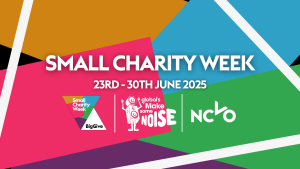160,000. that’s a really big number. But what could it be calculating? The number of lottery winners in the UK? How many pubs in the UK? The average salary for CEOs in the UK?
Actually, that’s the approximate number of small charities in the UK: charities with an annual income of less than 1 million pounds a year, and then there are more than 7500 charities with an income significantly larger than this in the UK alone.
That’s a lot of organisations who rely on the largesse of the British public, government funding and corporate donations in order just to survive, let alone do the good work they were established to provide.
How does anyone choose who to donate to?
Primary in the decision-making process tends to be personal connection. If you have experienced a mental health issue or disease yourself or within your family, this type of charity will come to the fore. Next might come personal interest, such as an animal or ecological charity and the third key decider is often local vicinity and connections such as a community centre or hospice.
So the interesting question here for marketers is that if the choices of consumers are already pretty much primarily established, how the hell do you get people to engage with your charity?
I recently worked with a charity that dealt with supporting the families of children born with a specific disease. Within that particular community they were well known and well respected and received significant funding, but outside of this user group they struggled to engage with consumers in any meaningful way.
In order to grow and establish a sound financial base they had to appeal to people outside of their established user group, whilst at the same time respecting and continuing to grow their existing community. All of this had significant impact on their comms planning.
Strategic offerings
A key part of this strategy has to be offering consumers a choice that they didn’t know they wanted. For example, my kids default to the golden arches when they want fast food, even if they then choose to order a chicken product. Understanding this, I then took them to a chicken-focused fast food vendor and they suddenly appreciated the delicious difference by going to a specialised provider. Previously they had understood that other chicken products were available but defaulted to heir familiar supplier. When offered a significant difference, it opened up a world of new possibilities.
As charity marketers we have to ensure that our comms offer consumers that significant difference.
Tangible benefits of creativity
Emotional benefits, cultural benefits, practical benefits. Something that takes givers to a new and different space as they dip into their pocket. This is why creativity has to be at the heart of charity comms, providing that giving alternative that people didn’t know they wanted or needed in their lives.
Recycling the same messages over and over again that have taken a charity to a certain level, will ultimately lead to diminishing returns even if it plays well to their current user group. Charities need to be bold and brave, utilise their insight into potential donors and then apply that knowledge to new and exciting campaigns that secure a wider user group and guarantee long-term security.
To support Small Charity Week 2025, visit The Big Give to donate today.



